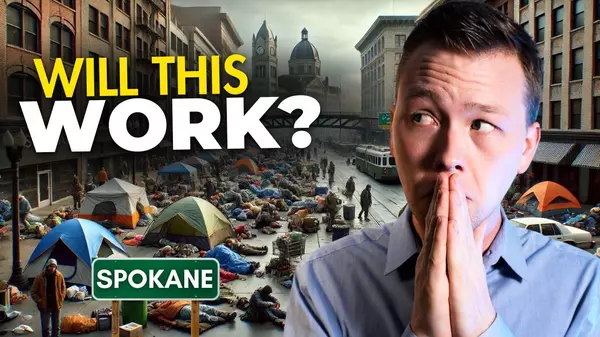
Fears vs Realities: 3️ Reasons Why This Housing Market Wouldn't Be The Same As 2008
Today's homebuyers are a little wary, and it's understandable why. The ever-increasing mortgage rates, home prices at all-time highs, a housing bubble burst, and uncertain market conditions to name a few. There are lots of concerns over the past couple of years regarding the imminent crash similar t

Buying or Selling in the Next 12 Months: What You Need to Know Today
There are many different reasons you might be thinking about selling your home. Perhaps you want to downsize (or upsize), perhaps you want to take advantage of the market, or maybe you need to move to another area of the country for your company. Regardless of the reasons, there are many things t

Spokane Housing Inventory has Exploded!
In just over 3 months, Spokane’s housing inventory has more than tripled. What does this mean for you as a buyer or a seller? Today we’re talking about the shift that’s taking place in not only the Spokane housing market, but the housing market across the entire United states as well
Categories
- All Blogs (877)
- Airway Heights (5)
- Audubon/Downriver (4)
- Balboa/South Indian Trail (5)
- Bemiss (3)
- Browne's Addition (3)
- Buying Your Home in Spokane (201)
- Cheney (3)
- Chief Garry Park (3)
- Cliff-Cannon (3)
- Colbert (1)
- Comstock (4)
- Dishman (3)
- Driving Tours (1)
- East Central (3)
- Emerson/Garfield (3)
- Five Mile Prairie (5)
- Grandview/Thorpe (3)
- Greenacres (3)
- Hillyard (3)
- Home Improvement (8)
- Home Prices (5)
- Housing Inventory (6)
- Housing Market (133)
- Instagram Videos (2)
- Interest Rates (24)
- Job Market in Spokane (3)
- Know Spokane (576)
- Latah Valley (5)
- Liberty Lake (8)
- Lincoln Heights (4)
- Logan (3)
- Manito-Cannon Hill (3)
- Medical Lake (4)
- Minnehaha (3)
- Moran Prairie (3)
- Mortgage (26)
- Moving out of Spokane (3)
- Moving to Spokane (142)
- Nevada/Lidgerwood (3)
- New Construction Homes in Spokane (1)
- New Construction Opportunities (3)
- North Hill (3)
- North Indian Trail (4)
- Northwest (3)
- Opportunity (3)
- Peaceful Valley (3)
- Riverside (3)
- Rockwood (4)
- Selling Your Spokane Home (157)
- Shiloh Hills (3)
- Southgate (3)
- Spokane Events (420)
- Spokane Neighborhoods (51)
- Spokane Restaurants/Food Places (24)
- Spokane Schools (12)
- Spokane Valley (14)
- Suncrest (1)
- Things to Do in Spokane (433)
- Veradale (3)
- West Central (3)
- West Hills (3)
- Whitman (3)
- Youtube Videos (49)
Recent Posts











